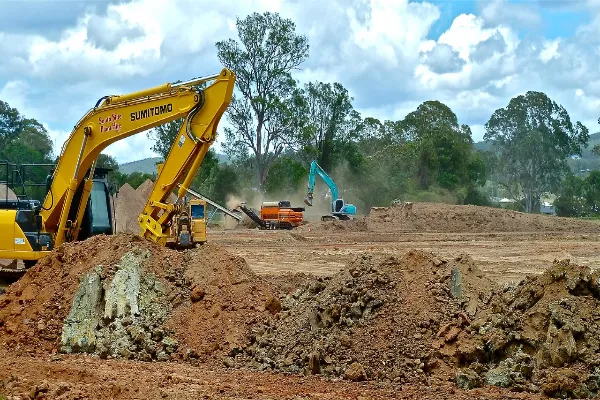Interesting Facts About Civil Engineering

Civil engineering holds the distinction of being one of the most crucial branches in the field of engineering, boasting a beautiful history. This discipline plays a role in designing and constructing essential structures that are an integral part of our daily lives, including bridges, roads, dams and buildings.
It has also been behind some engineering marvels throughout history, with the construction of the Panama Canal standing out as one such extraordinary achievement. In this article we will enter into some interesting facts about civil engineering, tracing its roots back to ancient times while exploring its applications in modern-day society.
The Engineering Wonders of the World: Civil Engineering Undertakings
Civil engineering is a field that plays a role in designing, constructing and maintaining our society’s infrastructure. It contributes immensely to our safety and comfort. From bridges to constructed roads, civil engineers are the masterminds behind some of the most awe-inspiring structures worldwide. Let’s explore examples of these marvels.
The Great Wall of China stands as a landmark showcasing civil engineering skills. This architectural wonder was built more than 2,000 years ago. Stretches over 5,500 miles. With its purpose of defending China’s border, the wall is an impressive blend of stone, brickwork and earth.
Another extraordinary feat of engineering is exemplified by the Panama Canal—a waterway connecting the Atlantic and Pacific Oceans. Completed in 1914 after challenges, this canal project remains one of history’s demanding engineering endeavors. Spanning 80 kilometers in length with a depth of 32 meters, it stands as a testament to ingenuity.
In bustling New York City, the Brooklyn Bridge proudly showcases itself as a masterpiece of engineering. In 1883, an extraordinary suspension bridge was constructed, marking the first time a steel wire suspension bridge had ever been built. Remarkably, it still holds the title as the suspension bridge in the United States. This magnificent structure spans across the East River connecting Manhattan and Brooklyn.
One of today’s undertakings in engineering can be found in Dubai. The Burj Khalifa. Standing tall at a height of 828 meters, it proudly claims its position as the world’s tallest skyscraper. It serves as a testament to what civil engineering is capable of achieving. The Burj Khalifa was meticulously designed to withstand extreme weather conditions and has been constructed with the utmost precision according to stringent engineering standards.
The Channel Tunnel, popularly known as the “Chunnel “, represents another awe-inspiring feat of engineering excellence that joins England and France. Stretching over 50 kilometers underwater, this remarkable tunnel project spanned six years to complete due to its complexity. It stands as a demonstration of civil engineering expertise and celebrates human ingenuity at its finest.
These examples merely scratch the surface of engineering marvels scattered across our planet. Civil engineering plays a role in ensuring our safety and comfort with these monumental structures standing as proof of its indomitable power.
The History of Civil Engineering Facts and Projects: How We Built a Better World

Civil engineering is a discipline of engineering that has served humanity for years, contributing to aspects of society. From the creation of road networks and bridges, to the development of water supply systems, civil engineers have played a role in shaping our modern world. Throughout history, they have been responsible for designing, building and maintaining infrastructure that we rely on in our lives.
The roots of civil engineering projects can be traced back to Ancient Egypt, where monumental structures like the Great Pyramids were erected. In Ancient Greece, civil engineers focused on designing and constructing bridges, aqueducts and roads. During the Roman Empire era, they were instrumental in erecting enduring structures such as the Colosseum and aqueducts.
During the Middle Ages, civil engineering projects revolved around constructing cathedrals and fortifications. However, during the Renaissance period, civil engineers expanded their scope to include scale works like harbors. The Industrial Revolution witnessed an upsurge in civil engineering endeavors as advancements enabled them to construct substantial edifices such as railroads and bridges.
In times, civil engineering has encompassed projects ranging from towering skyscrapers, to dams, highways and airports.
Technological advancements have paved the way for civil engineers to construct more impressive structures, like the Channel Tunnel connecting England and France. Additionally, civil engineers play a role in advancing energy sources such as wind and solar power.
Civil engineering has made progress since Ancient Egypt. With the introduction of technologies and innovative approaches, civil engineers have contributed to creating a world in which we reside. Whether its building roads and bridges or promoting energy solutions, their impact on society is. Will continue into the future.
The Impact of Civil Engineering on our Society and Environment

Civil engineering is a profession that has played a role in shaping our modern society and the environment we live in. This field integrates disciplines like mathematics, physics, materials science and computer science to create a range of infrastructure projects that greatly impact our daily lives. The responsibilities of engineers encompass designing, constructing and maintaining infrastructure such as roads, bridges, railways, water supply systems, sewage systems, dams and more. Additionally, they contribute to the development of parks, playgrounds and other recreational spaces while conducting environmental impact assessments and offering sustainable solutions for environmental management.
Undoubtedly, civil engineering is a cornerstone of our society and environment as it enhances the well-being of individuals residing in those areas. By creating transportation networks that enable people to travel between different locations while providing essential services like water supply and electricity access. Furthermore, civil engineering projects actively contribute towards addressing concerns by mitigating air pollution and preventing water pollution.
The civil engineering profession also holds significance for any region it operates in.
Civil engineering projects have an impact on the economy as they generate employment opportunities and increase the demand for goods and services. This in turn enhances the living standards of people in the area. Contributes to poverty reduction.
Furthermore, civil engineering initiatives play a role in protection. For instance, engineers can. Construct dams and other infrastructure to safeguard against floods and other natural calamities. They also contribute to mitigating pollution by designing wastewater treatment plants and implementing pollution control systems.
In conclusion, civil engineering is a profession that significantly influences our society. It not only enhances the quality of life for residents but also plays a pivotal role in environmental conservation while creating job opportunities. Therefore, it is imperative that we continue supporting and valuing this field of expertise.
Investigating the Latest Technologies – Civil Engineering Facts

As technology continues to advance at a rate, the possibilities for civil engineering projects also expand. In decades, civil engineers have achieved what was once deemed impossible due to technological advancements. The future of engineering shines brightly filled with potential for even more intricate projects.
One notable advancement in engineering is the adoption of printing technology. This innovative approach enables engineers to construct structures accurately. By utilizing 3D printing, engineers can bring life to designs featuring details that were previously unattainable through traditional construction methods. Furthermore, this technology finds application in building bridges, erecting buildings and undertaking civil engineering initiatives.
The integration of drones has gained popularity within the realm of civil engineering projects. These unmanned aerial vehicles serve as tools for precise site inspections. They are also capable of capturing measurements for large scale structures like bridges. With this technology at their disposal, engineers are able to expedite project completion while maintaining accuracy.
Another pivotal technology making its mark in civil engineering projects is AI. Its significance continues to grow within the field as it offers solutions.AI technology is playing a role in the design of civil engineering systems. It enables engineers to efficiently process data with speed and accuracy.
Augmented reality (AR) is also gaining popularity in civil engineering projects. By creating models, AR allows engineers to simulate real world conditions, providing insights for decision-making.
Furthermore, robotics is increasingly being integrated into civil engineering initiatives. Automation of tasks like construction through robotics enhances project efficiency.
Civil engineering is a captivating field that unveils aspects of how our world is constructed, designed and built. With its history spanning centuries, this branch of engineering continues to evolve.
Civil engineering plays a role in shaping the world we live in, from constructing bridges, to erecting skyscrapers.